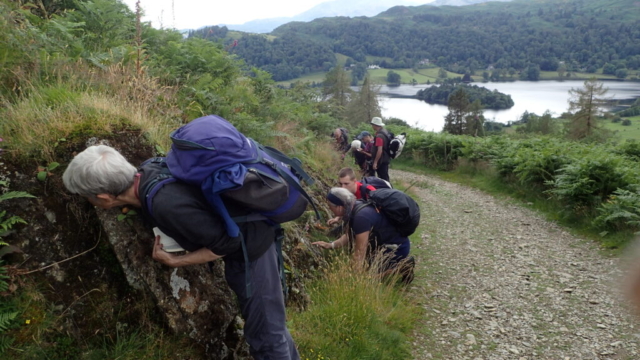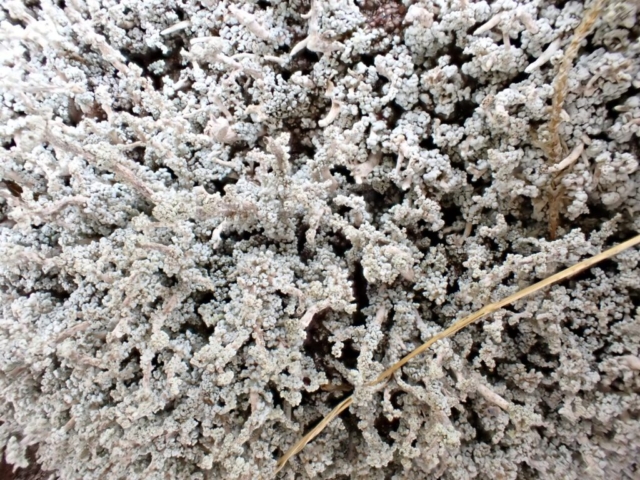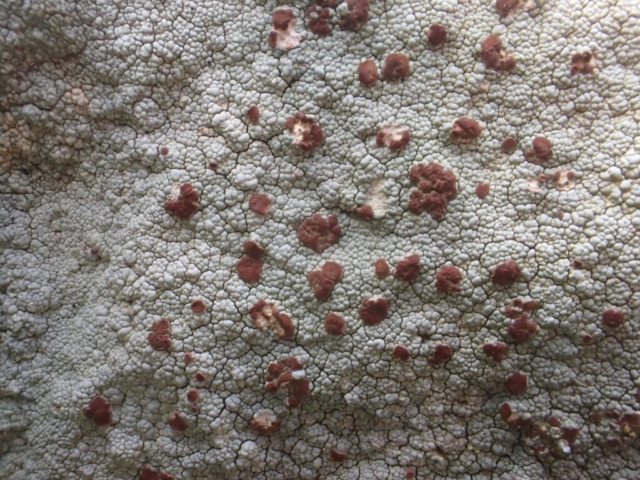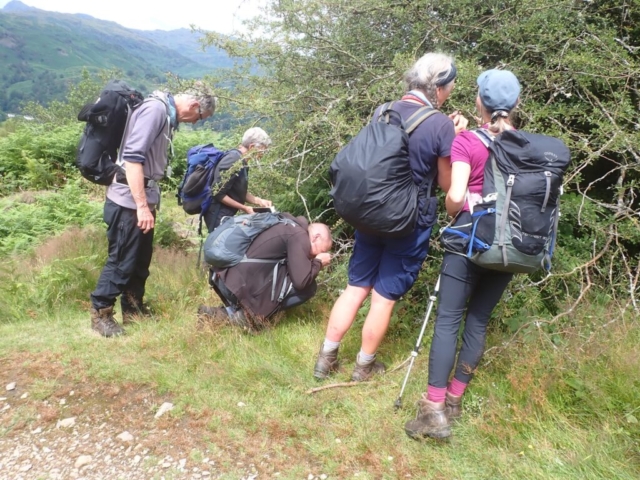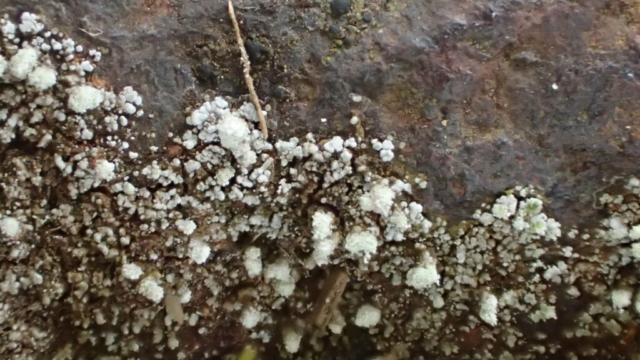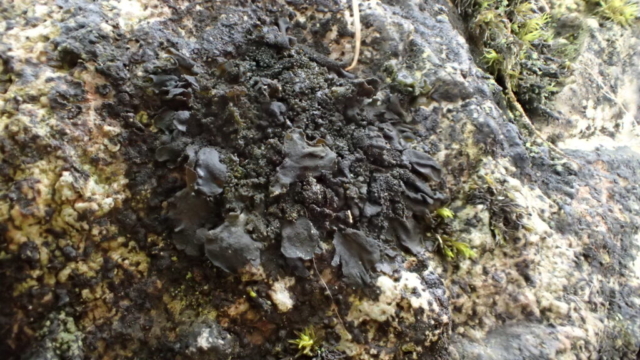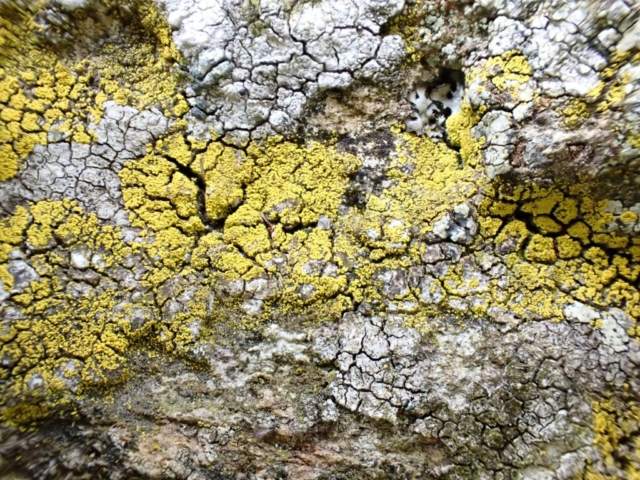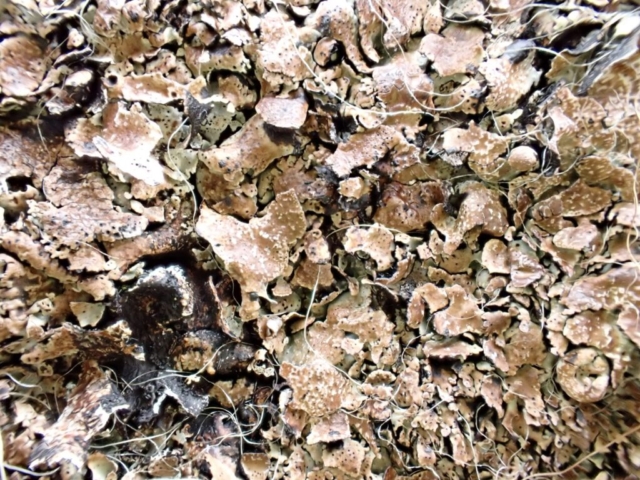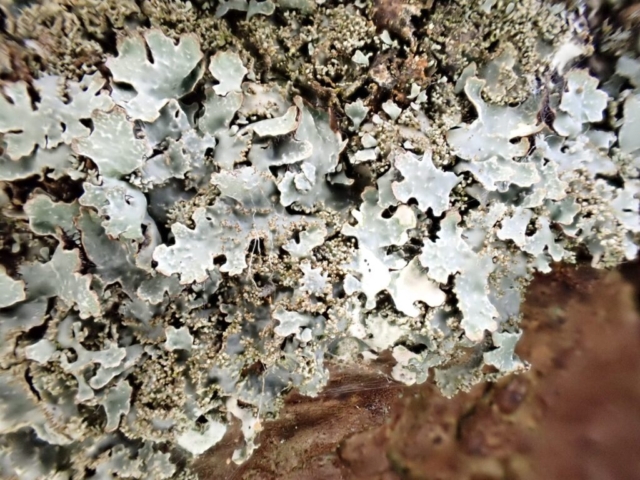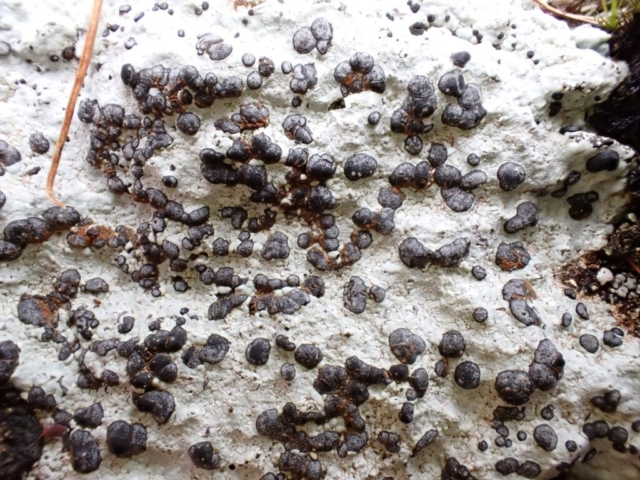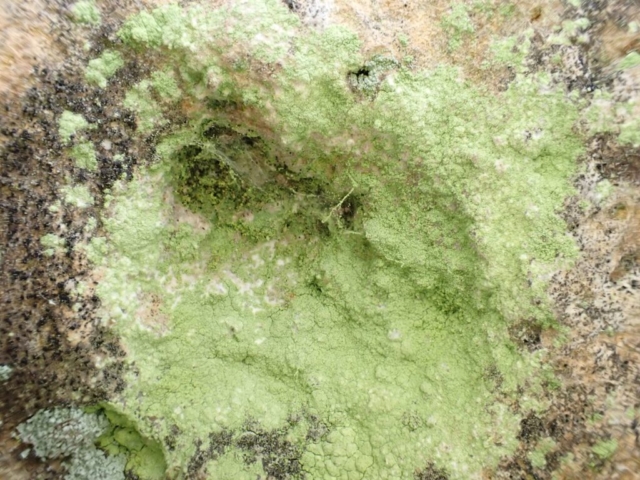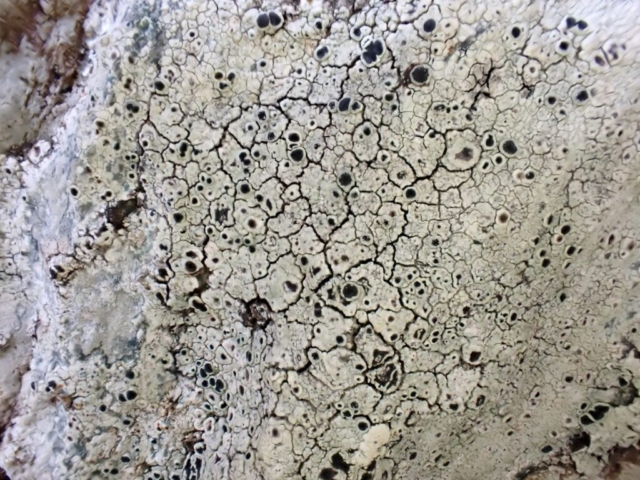A slow climb to Alcock Tarn.
Mid July and I feared that the central Lakes would be very busy; have no parking; experience torrential downpours and be full of biting insects. But none of these were true for our Alcock Tarn trip!
In a break with tradition, we didn’t get distracted on our journey from meeting point to target area. Well, that’s not quite true. As we ascended out of Bracken Fell woods we succumbed to the lure of an outcrop. It was the ideal place to outline lichen basics to the newcomers: there was Lepra corallina, Rhizocarpon geographicum, Stereocaulon vesuvianum and Ophioparma ventosa. Some Cladonias too. It was a good half hour before we moved on up the zigzags. There was a boulder with Ephebe lanata on it. And an emerging dragonfly to examine: a female Southern Hawker (Aeshna cyanea) I think.
But we quickly found another outcrop to distract us, and an oak tree with Normandina pulchella. By the time we’d examined a hawthorn with a wide variety of foliose species and particularly nice “dancing” Pseudevernia furfuracea it was time for lunch. On the crag nearby was the bright yellow Arthrorhaphis citrinella.
After a break, our slow ascent continued. An impressive metal pipe boasted a number of metalliferous lichens: Placopsis lambii, Rhizocarpon oederi, Scoliciosporum umbrinum, Stereocaulon pileatum (“fuzzy headed Fisher Price” people as Rebecca Yahr once described them) and Ionaspis lacustris.
To our surprise, we caught up with the bryophyte party ( but only briefly). Ash limbs had impressive Platismatia glauca (frilly lettuce) and Parmelina pastillifera. The jelly lichens on a boulder in the beck- Collema glebulentum and Scytinium pulvinatum– maybe suggested a basic influence.
On the move again we found Lichenomphalia ericetorum on an old stump base- and L. hudsoniana too. Bird perches had piles of bones: and Candelariella vitellina; flat outcrops had Sphaerophorous fragilis, the first Acarospora fuscata of the day and pruinose blisters of Lasallia pustulata.
A final push brought us to the tarn. There were Mallards, Water Horsetail and Lesser Spearwort, together with impressive views. But somehow, having reached the goal, we didn’t have any desire to push on. Would there be more at Butter Crags? We’ll have to leave that for another day. Needless to say, it didn’t take very long to descend at all. But we had found nearly 100 species on our slow climb…
Text: Pete Martin
Photos: Pete Martin, Chris Cant, Paul Hanson

